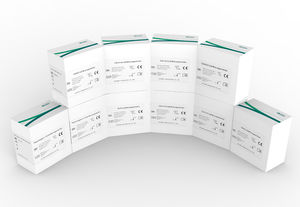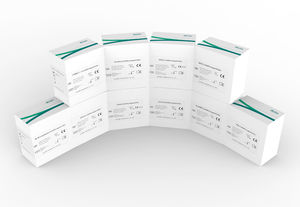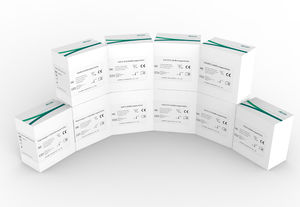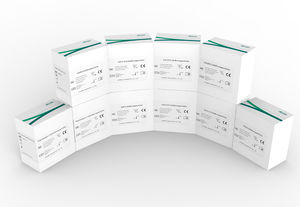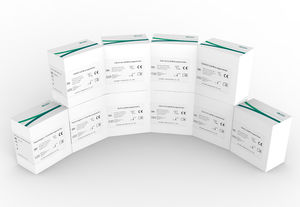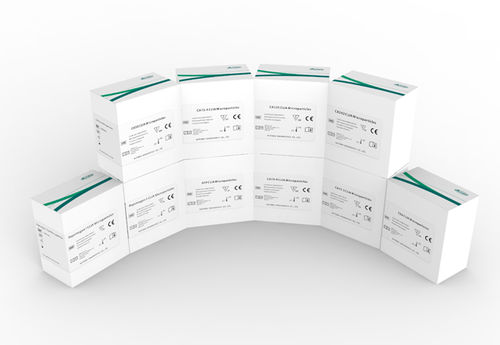
- Laboratory
- Laboratory medicine
- Pancreatic cancer test kit
- Autobio Diagnostics
Pancreatic cancer test kit CMB0202oncologyCEACA 125
Add to favorites
Compare this product
Characteristics
- Applications
- for pancreatic cancer
- Application field
- oncology
- Tested parameter
- CEA, CA 125, CA 19-9, CA 50, lead
- Sample type
- clinical, serum, cell
- Sample volume
0.025 ml
(0.00085 US fl oz)
Description
Pancreatic ductal adenocarcinoma is one of the most difficult malignancies to diagnose and treat. The most widely used and best validated marker for pancreatic cancer is CA 19-9. [1]CA 50 is a new tumor marker based on a monoclonal antibody (MAb) against a human colorectal carcinoma cell line. [2] The detection of serum tumor markers (CA19-9, CEA, CA125 and CA242) is conducive to the early diagnosis of pancreatic cancer and joint detection of tumor markers helps improve the diagnostic efficiency. [3]
Clinical Significance
Although discovered 30 years ago, CA 19-9 remains the gold standard serum marker for patients with pancreatic cancer.[1] Follow-up using CA 19-9 and CA 50 is a simple and sensitive way of monitoring the postoperative course of patients with pancreatic cancer, and may give a lead time of several months for a recurrence compared to conventional methods.
CA242 and CA19-9 have better performance in the diagnosis of pancreatic cancer than CEA. Furthermore, parallel combination pattern of CA19-9+CA242 could be considered of better diagnostic value for pancreatic cancer patients.[4]
CA50 is a glycolipid antigen that plays an important role in cell growth and differentiation. Subgroup analyses indicated that CA50 was the only tumor biomarker that was significantly correlated with long-term survival in CEA-normal CRC patients.[2]
Increased levels of the CA 19-9 and CA 125 markers in patients with pancreatic pathological abnormalities usually indicates a malignant nature of the lesion.[5]
Catalogs
No catalogs are available for this product.
See all of Autobio Diagnostics‘s catalogsRelated Searches
- Autobio Diagnostics test kit
- Solution reagent kit
- Autobio Diagnostics blood test kit
- Autobio Diagnostics serum test kit
- Plasma assay kit
- Infectious disease detection kit
- Diagnostic reagent kit
- Respiratory infection test kit
- Autobio Diagnostics clinical test kit
- COVID-19 detection kit
- Clinical chemistry analyzer
- Bacteria reagent kit
- Antigen assay kit
- Clinical reagent kit
- IgG test kit
- Automatic clinical chemistry analyzer
- Benchtop clinical chemistry analyzer
- Laboratory detection kit
- Autobio Diagnostics cell test kit
- Microbiology reagent kit
*Prices are pre-tax. They exclude delivery charges and customs duties and do not include additional charges for installation or activation options. Prices are indicative only and may vary by country, with changes to the cost of raw materials and exchange rates.


